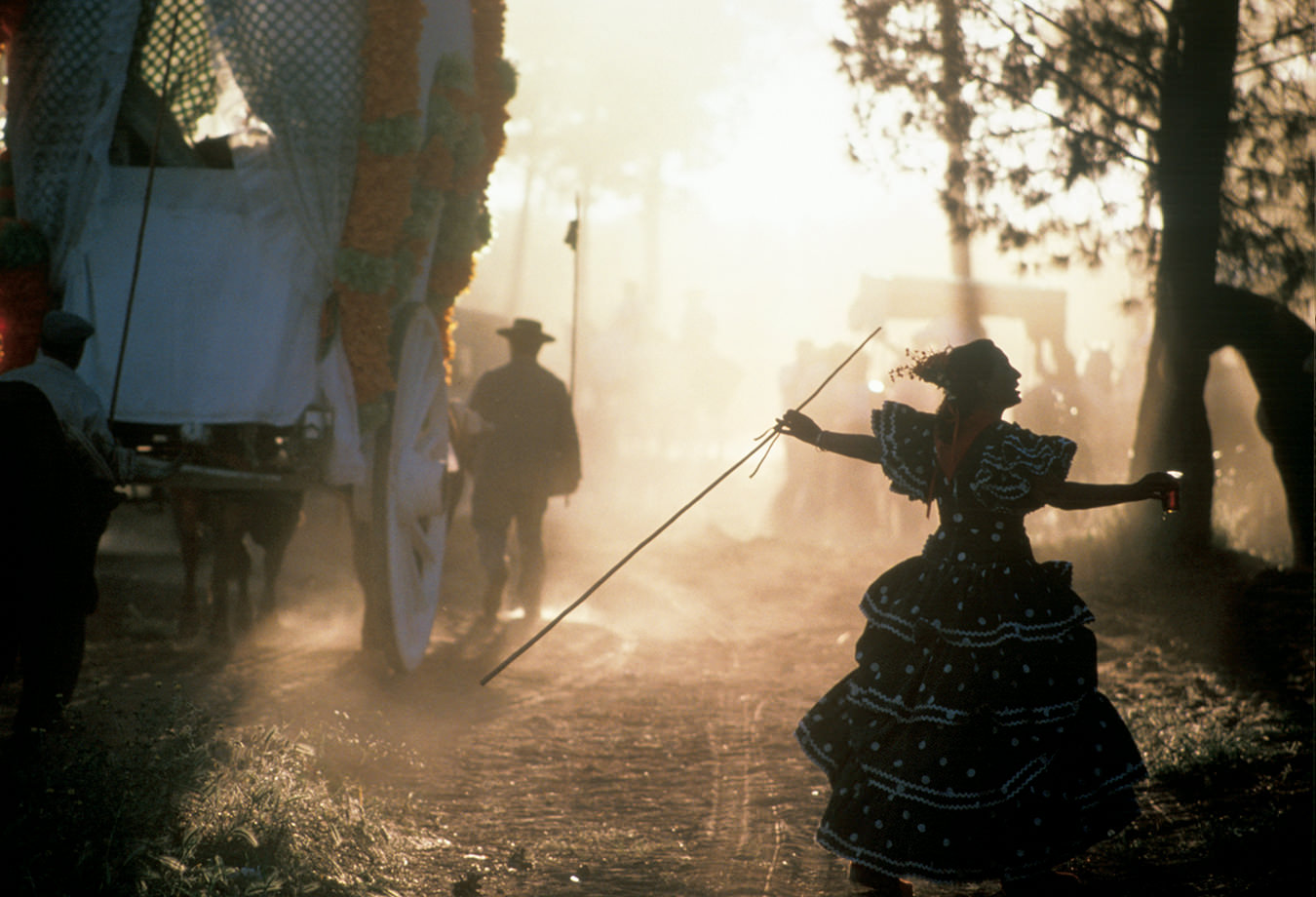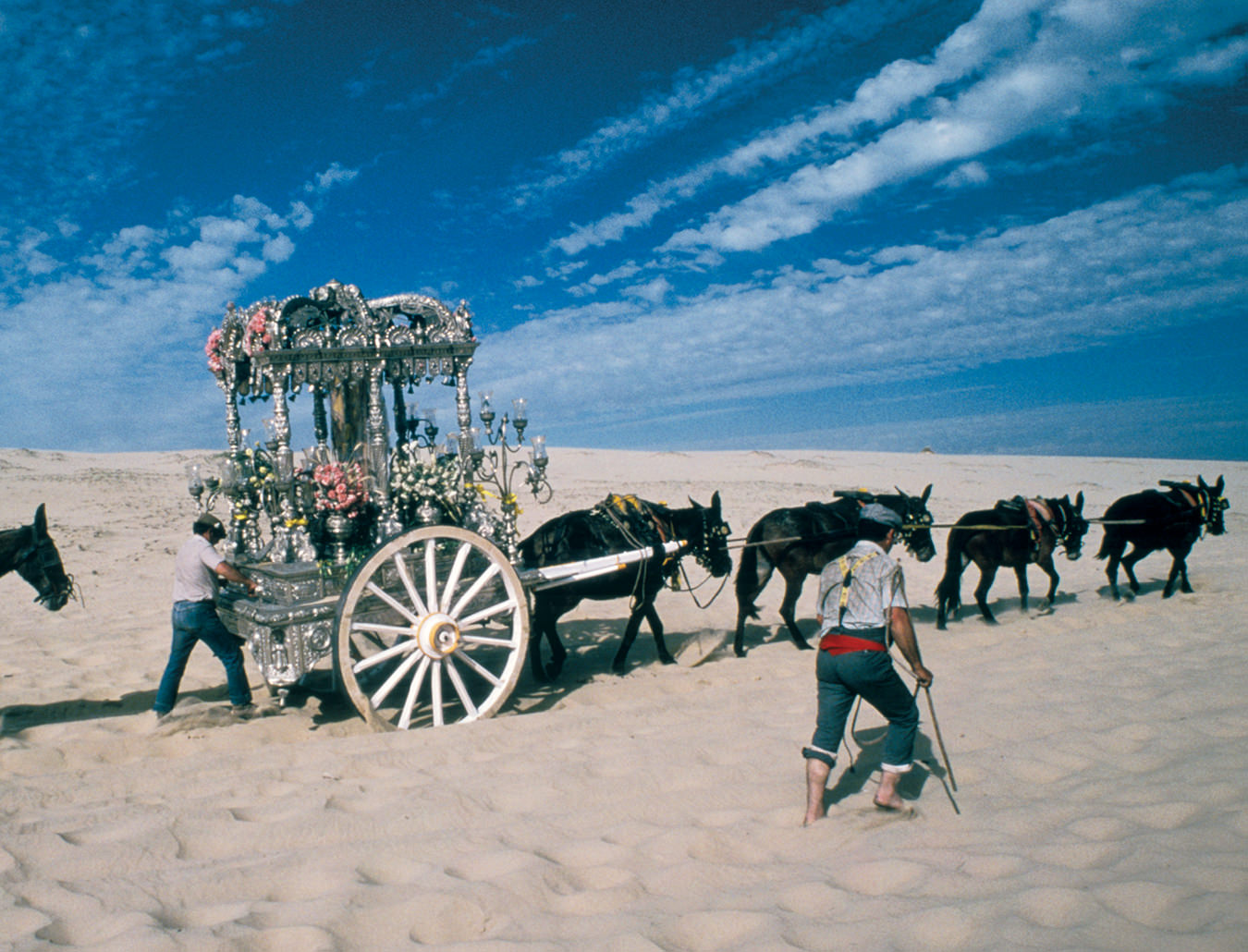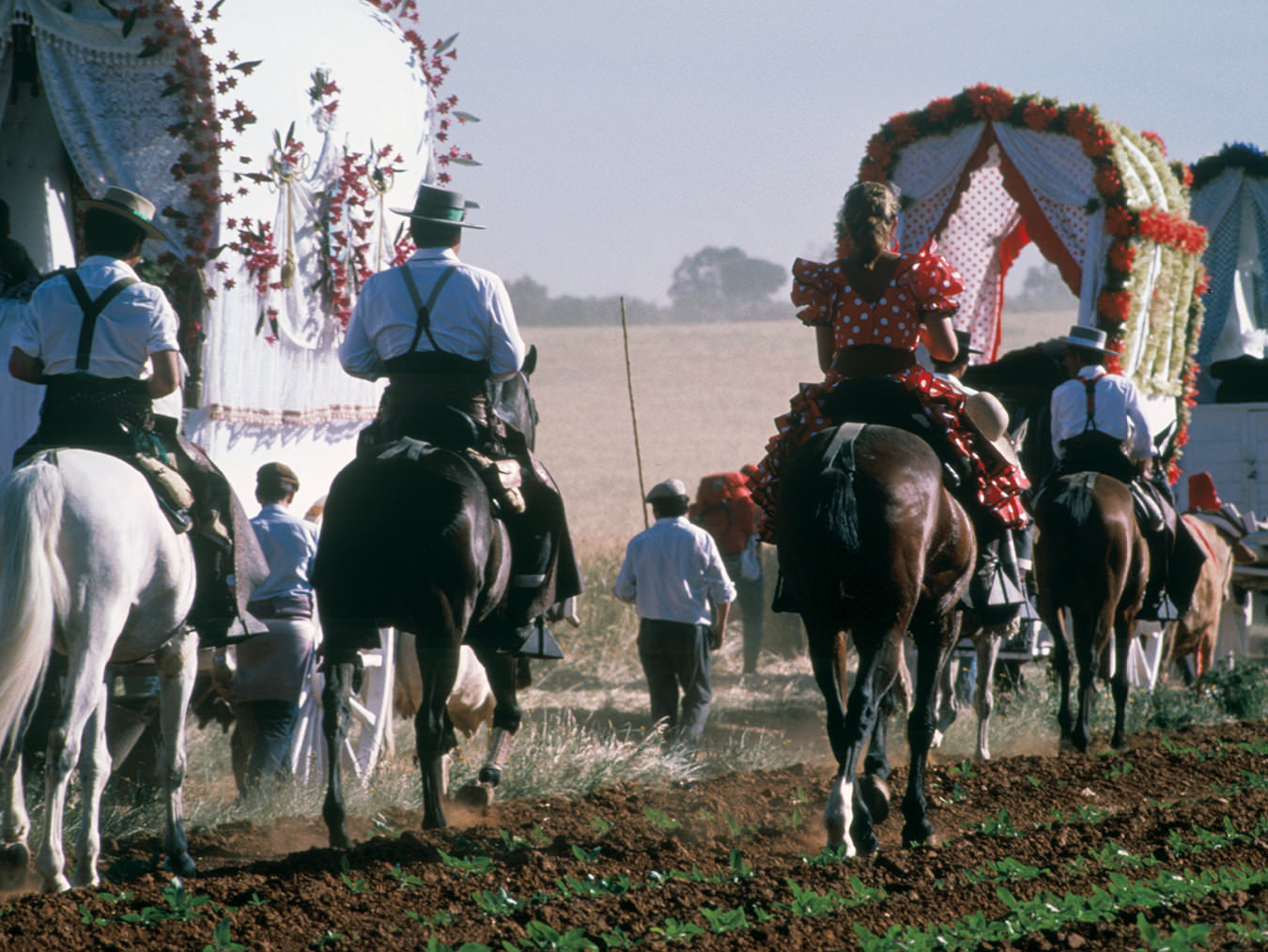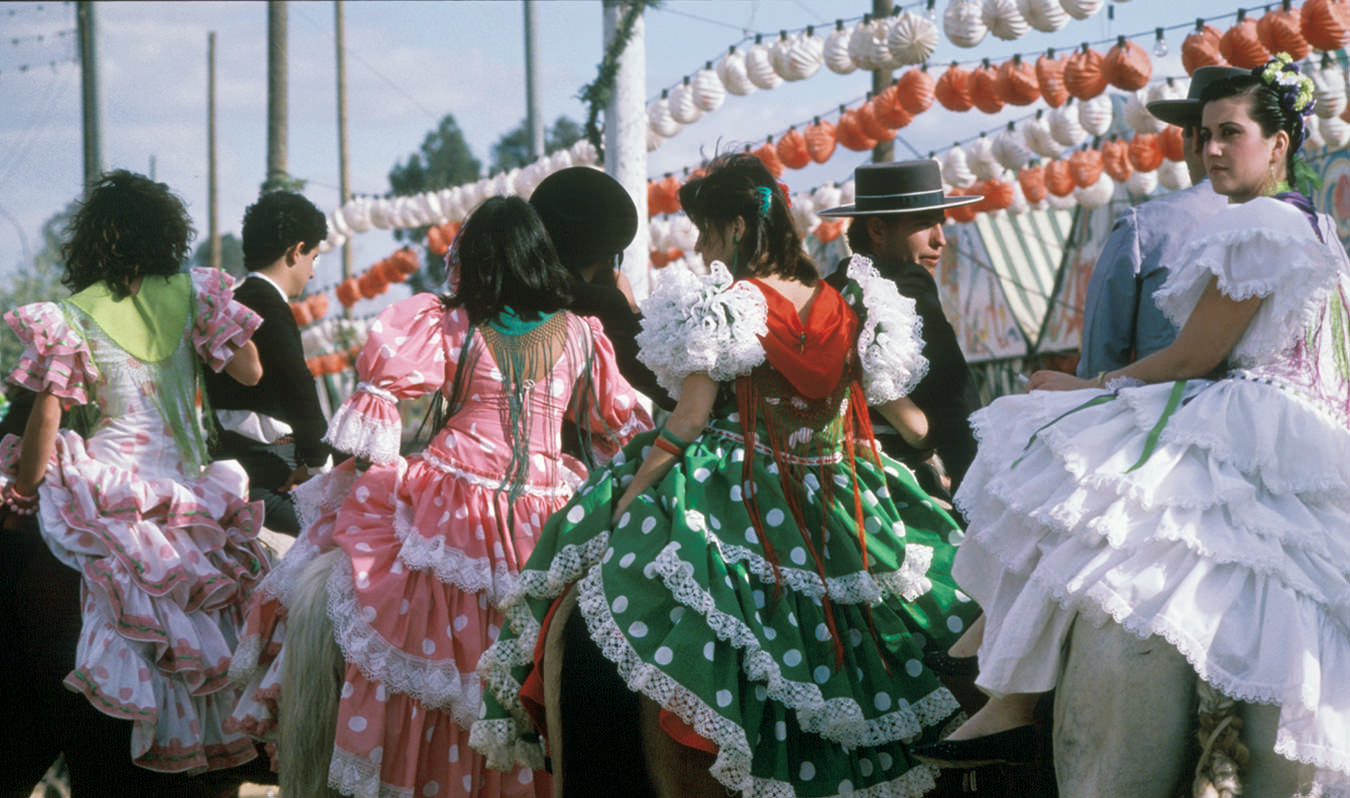Sherry, Baby
Pilgrimage in Andalucia.
It is sensuous and elegant, perennially stylish and just ever so civilized. Somerset Maugham put it precisely when he labeled it “the civilized drink”. It is also a surprising kitchen colleague and dinner companion. And, really, what other wine is in your cellar that comes up equally adept with Oreos and oysters? If you’ve ever wondered where to source such an all-purpose libation, to accompany all those hard-to-match foods, Spain is the place. Sherry is your tipple.
Sherry can be as robust and hearty as anything rare and red in the cellar; as smooth and subtle and silky and luscious as your finest fantasies can conjure. It can be dry enough to demand a dustpan and brush; sufficiently sweet and viscous to float Metallica.
Sherry runs a flavour-gamut few other wines can muster, except perhaps California’s proudest varietal, Zinfandel. Whether your personal sherry preference is Nevada-dry or Sumo wrestler-round, in sherry you’ve got something to sip on. Many somethings. Of many different styles, weights, levels of sweetness.
Sherry is one of the world’s best known, most loved wines, fortified wines, taking its name from the sun-soaked Jerez region in the southwestern part of Spain’s Andalucia. (It is pronounced hair-ETH, should you choose to affect the Cathtilian lithp, with a bit more punch to the second syllable.)
The wine of Jerez is a most versatile and agreeable little number. It works at room temperature, chilled, warmed, straight or on the rocks, mixed or matched.
You can have it as aperitif, soup-course companion, seafood friend, even evening liqueur. It is indispensable in cooking.
Tapas, the now ubiquitous Spanish finger-foods are always well served by sherries. You may be surprised how fine a match it makes with chorizo or marinated mushrooms, with clams or shrimp, figs or olives, crackers or biscotti.
At home, in Andalucia, sherry is also frequently employed as a celebration wine, much as we might use champagne, to mark feasts, weddings, other occasions and events. It is sent off regularly to earn its keep in well over 150 countries of the world. Cooler climate countries (we certainly qualify as one of those) seem to be particularly appreciative of it, maybe more so than warmer spots.
The growing and producing region is bounded by three important towns: Jerez de la Frontera, Puerto de Santa Maria and Sanlucar de Barrameda. Everywhere you cast your eyes, from almost any point within that area, you see a sea of vines covering thousands of hectares of white earth. This is the famous albariza soil and it plays as much a part in the end result as do the grapes.
Essentially, two grape varieties go into sherry; Pedro Ximenez and Palomino de Jerez. Strict government regulations determine their grafting, pruning, growing and harvesting; soil, sea and sun all do their part to make the conditions ideal.
But location alone isn’t the sole reason Jerez is the sherry capital of the world. There is tradition: vineyard techniques and winemaking skills have had a little time to develop in this sunny corner of Spain, 3,000 years, give or take a few.
The earliest vines were planted by the Phoenicians in what is now known as Cadiz and the date for that enterprise has been fixed around 1100 BC Later, they moved along inland to Xera (now Jerez) and while they likely left lots of vines behind, the peripatetic Phoenicians took a few cuttings and started planting again.
Sherry is one of the oldest wines in the world and its name has undergone all sorts of changes during the ages. Xera, Cera or variations thereon are some of its earlier forms. The Romans enjoyed Cerentese wines; the Arabs who came to dominate the region liked a little Seret. The Visigoth Seritium might as well have given his own name to it, it was close enough, but decided on Scherisch instead.
It came to be known as Jerez de la Frontera by the 13th Century, the frontier being the dividing line between Christian and Moslem territories. It was the Moors, discovering distillation and the production of alcohol from grapes, who propelled sherry-making a long way up the line.
Those who are charged with the responsibility of keeping it in constant awareness around the world call sherry “a name with the title of nobility”.
Fortifying the wine with spirits preserved quality and stability, and made it a good companion on long sea voyages. Columbus carried a few choice casks in the Number 1 hold on his journeys. If anyone gets credit for being the wine’s first exporter to the Americas, his name should be on the plaque.
But, as has so often happened in the development of the world of wine, it was the enterprising British who got seriously behind it and sent it over the top as far as the world’s concerned. Came the 16th Century and the English developed a strong fondness for the marvelous flavour of the wine. Therein likely lies the secret of the English-sounding name we now know it by.
Wines shipped out of Jerez bore the label Vino de Jerez, Saca, which meant Wine of Jerez, for Export. And almost at once all manner of anglicisms on Jerez came into being: jerries, sherries, sack, sherries, and so on. Remember Falstaff? In a foolhardy moment he announced that if he’d had a thousand sons he would teach them all to forswear “thin potions and addict themselves to sack”, instead.
‘Sack’ as a sherry term has uncertain origins. Maybe it’s a mispronunciation of the Spanish saca or the French for dry, sec; some think the word comes descriptively from the sacks in which sherry casks were draped; or, a little more farfetched, perhaps, from Sir Francis Drake’s sacking of Cadiz in 1587, which resulted in the “liberation” of 3,000 barrels of the wine.
The wines of Jerez, unlike most others, require continuous ventilation, so the famous sherry cellars (bodegas) are actually above ground. High vaulted ceilings and walls with lots of windows allow air to circulate around the casks. Most sherry spends its life in American white oak casks.
Sherry is also unique in the way it is aged and blended. The solera system is employed: casks of wines of different age are placed in rows. The oldest are at the bottom and the youngest on top. Each year, about a third of the wine from the old casks is drawn off.
The wine is replenished by an appropriate volume from the next oldest row, the first criadera, or cradle. That one is in turn refilled from the second criadera, containing a younger wine still, and so on, up the chronological ladder.
The older wines are said to “educate” the youngsters, while the young wines “refresh” their elders. After the blending process within the solera is finally complete, the wines are fortified by blending in spirits.
Head south out of Seville and it’s only about 80 km to Jerez, although it may take you a while. Andalucia, the sleepy land of wines, is also often the land of sleepy motoring. Along the way you will see the names and logos of some of the most famous sherry producers, on billboards, the sides of sheds, in large letters on the roofs of bodegas, even peering, all black-bull-like over a ridge or hillock: Duff Gordon, Gonzalez Byass, Osborne, Pedro Domecq and, of course, Sandeman.
Sherry is made, and often given the same name, in South Africa, Australia, California, plenty of other wine places. But the only true sherry is the exclusive wine of this carefully defined area of Spain. Should you think anyone else is ethically or legally entitled to the name, you’re going to have to reckon with none other than the Consejo Regulador de la Denominacion de Origen Jerez-Zerez-Sherry y Manzanilla Sanlucar de Barramedar. Any body with a name like that is not to be trifled with, especially not sherry trifling.
Among the main types of sherry is Manzanilla, made from grapes growing in vineyards that front the Gulf of Cadiz and, according to some purists, not really a sherry at all. It’s slightly bitter and shows brilliant colour, ranging from pale green to deep gold. It is the driest and from here, sherries progress towards sweetness and fullness. Fino is pale, dry and fragrant with a delicate but distinctive aroma. It is ideal with seafood. In fact, one of life’s great gustatory treats is well-iced fino and prawns just waiting to be shelled. An old favourite recipe in my kitchen is a dish of sherried oysters in hot chili sauce. Try it in place of vermouth in a martini, with one of those new ‘boutique’ gins that are coming out of the U.K.
Amontillado is an older sherry, transparent and with definitely nutty taste. It goes well with sweets of any kind, walnuts or pecans, shortbread, dried nectarines, figs.
Oloroso has a heady aroma and plenty of substance. It is smooth and comforting to sip, equally suitable as aperitif or at the end of a major meal. If you have a middling little oloroso on hand, squeeze a drop or two of fresh lemon juice into the glass before you pour; you’ll come up with a delicious drink.
Cream sherry is the one with the very mellow flavour which comes about when different sweet wines have spent a lot of time maturing together. It is best with rich desserts; this would be the one that takes your favourite chocolate chip cookies, or Oreos, seriously. Or set it up as a mid-evening drink, too late for an aperitif, too early for a nightcap.
The possibilities are endless. The flavour combinations too. It’s way too late in the game to keep it in a cupboard just for ‘medicinal purposes’. Sherry is a drinking wine.











